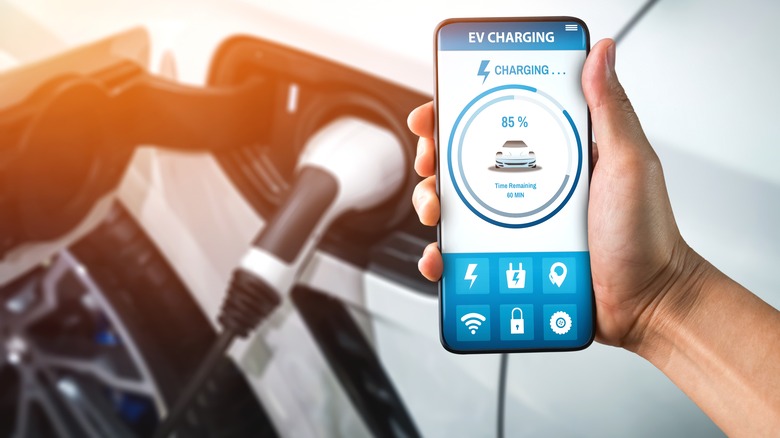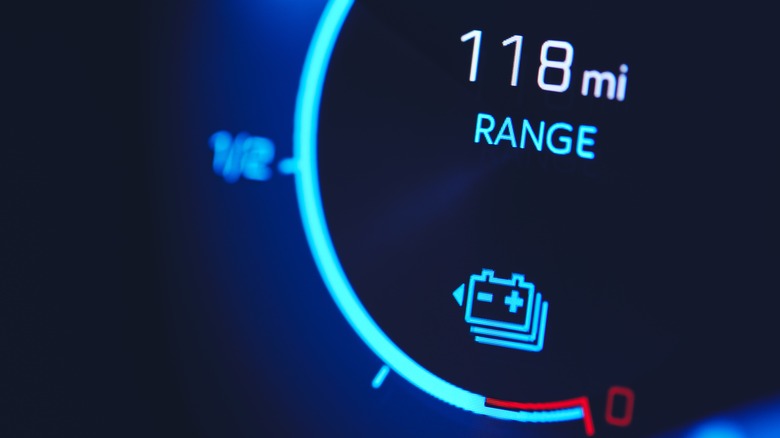What Is Phantom Drain, And How Does It Impact Electric Vehicles?
What would October be without some nods to All Hallow's Eve, right? "Phantom Drain" is not a scary costume you can buy at a Spirit Halloween store, but it might be soon, given how fast those folks work. It's also not a supervillain appearing in the pages of your favorite comic book, nor is it the uber-secret working title for "Star Wars: Episode I – The Phantom Menace." Although, that movie did manage to simultaneously menace and drain us, so that would have been appropriate.
"Phantom Drain" is, however, a term we all need to understand since both state and federal regulations are looking to ensure the auto industry eliminates fossil-fueled cars in favor of all-electric vehicles (EVs) over the next decade.
In simplest terms, phantom drain, also referred to as "vampire drain" (hello again, Halloween!), happens when the energy from an EVs battery gets drained while parked and is not actually in use. In turn, this could potentially reduce the car's overall range on any given charge. How far you can go is kind of an important thing to know, down to the mile in some cases, since no one wants to be stranded in the middle of nowhere ... and not just because it's the most perfect setup for a horror movie.
EVs have more gadgets and gizmos than space shuttles
According to Utilimarc, this new-fangled electrical problem was initially discovered in Tesla's 2013 Model S. The vehicle's abundant array of onboard electronics was found to be siphoning power from the battery and reducing the car's overall range by approximately five miles. A deeper investigation discovered that this occurred when the Model S "sat unused and unplugged" for more than 18 hours. Additionally, it's been reported in various Tesla forums that EVs lost as much as 30% of their charge after being parked for a month.
But what's the culprit? Several things, it turns out. Tesla EVs aren't the only ones loaded with a veritable cornucopia of electronic goodies from security and monitoring sensors, automated telematic data programs and alerts, to the more mundane features like power accoutrements, high-powered infotainment systems with oversized screens, climate control. And many of those features have third-party apps that continually ping the car in search of up-to-the-minute data.
In essence, EVs never truly sleep (like the undead) and, on some level, constantly consume energy from the battery. As a result, you get the dreaded phantom drain.
Stop flushing your EV's range down the drain
Car makers now suggest owners shut off all those helpful onboard electronics and refrain from constantly pinging the car like they do their social media pages. With Tesla EVs, Sentry Mode keeps the vehicle in a constant "high state of power consumption" and is the number one thing owners should turn off.
While five miles might seem minimal, we still don't know if this is a progressive problem that will occur as the batteries grow older and get closer to their end of life. And don't think you can breathe a sigh of relief if you don't own a Tesla because it's not just relegated to Elon Musk's electric vehicles. Like any new technology, this nail-biting problem is being discovered in many makes and models, from Porsche Taycans to Ford's F-150 to Rivian's R1T.
On the flip side, EV battery tech will undoubtedly continue to advance as this technology matures. We'll see increases in capacity and range, and we will probably even find a way to ultimately put a wooden stake through the heart of vampire drain.

